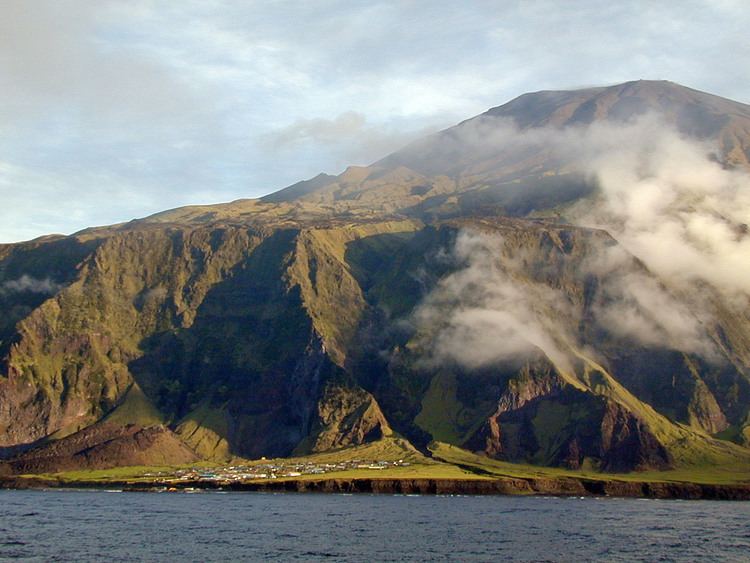First inhabited 1816 Population 268 (2016) Area code +44 | Named 1867 Local time Saturday 10:43 AM Founder William Glass | |
 | ||
Weather 18°C, Wind N at 27 km/h, 68% Humidity | ||
Edinburgh of the seven seas wiki videos
Edinburgh of the Seven Seas is the main settlement of the island of Tristan da Cunha, in Saint Helena, Ascension and Tristan da Cunha, an overseas territory of the United Kingdom, in the South Atlantic Ocean. Locally, it is always referred to as The Settlement or The Village.
Contents
- Edinburgh of the seven seas wiki videos
- Map of Edinburgh of the Seven Seas TDCU 1ZZ Saint Helena Ascension and Tristan da Cunha
- History
- Climate
- Transport
- Local government
- Government services
- Places of interest and attractions
- References
Map of Edinburgh of the Seven Seas TDCU 1ZZ, Saint Helena, Ascension and Tristan da Cunha
Edinburgh of the Seven Seas is regarded as the most remote permanent settlement on Earth, being 2,173 kilometres (1,350 mi) from the nearest other human settlement, on Saint Helena.
History
The settlement was founded on the island of Tristan da Cunha in 1816 by a Sergeant Glass from the Borders of Scotland after the UK annexed Tristan da Cunha. A military garrison was maintained on the islands as a guard against any French attempts to rescue Napoleon, who was imprisoned on Saint Helena. The military garrison remained until the end of World War II.
It is named after Prince Alfred, Duke of Edinburgh, the second son of Queen Victoria, in honour of his visit to the island in 1867.
Edinburgh of the Seven Seas is the only major settlement of Tristan da Cunha, and contains a small port, the Administrator's residence, and the post office. It was damaged in a volcanic eruption on the island in 1961, which forced the entire population to abandon the settlement and evacuate to Calshot, Hampshire in the UK. The eruption destroyed the settlement's crayfish factory.
After the return of most of the islanders in 1963, the settlement was rebuilt. The harbour at Edinburgh was named Calshot Harbour, after their temporary home during the eruption.
Climate
Edinburgh of the Seven Seas has an oceanic climate (Cfb, according to the Köppen climate classification), with temperatures heavily moderated by the ocean.
Transport
There is one road, M1, which connects the town with Patches and is used by the few private cars on the island. Paved paths provide walking access to buildings around town. A bus service called Potato Patches Flier (using a 24-seat Isuzu mini school bus from South Africa) is available to pensioners in town to travel to places around the island.
All motor vehicles on the island have Tristan da Cunha plates consisting of letters TDC and 2 or 3 numbers.
The town has a small harbour with berths accessible by small vessels only.
Local government
The island's local affairs are managed by the Island Council, a 14-member administration that meets six times a year and is elected every three years.
Government services
The town is home to the island's emergency services, which comprise one ambulance (a Toyota Hilux operated by Camogli Hospital), one fire engine (a Land Rover Defender with a small ladder) and one police car (Land Rover Series).
The town administration also has a vehicle for official use.
Places of interest and attractions
Most buildings in town are single story, with the largest being the factory and the tallest being St Joseph's Church.
Notable People
